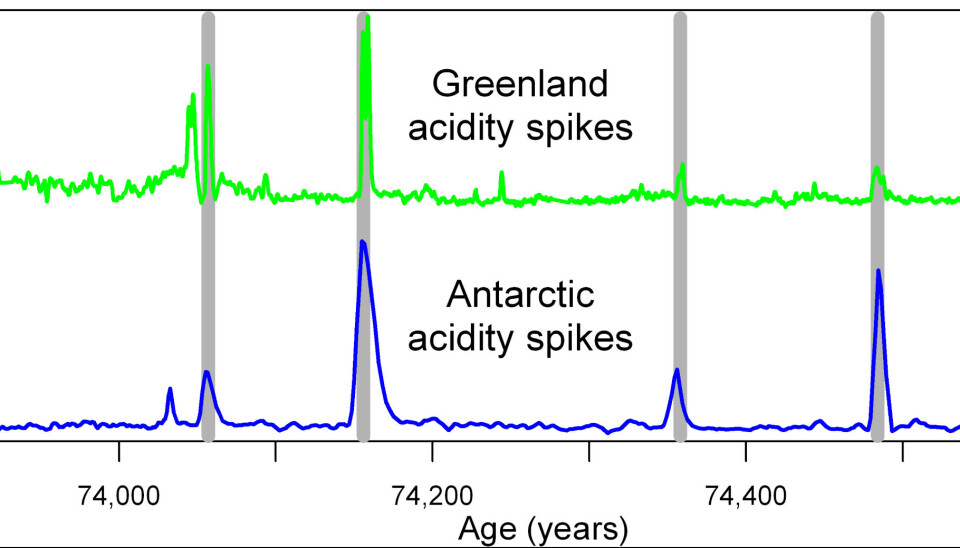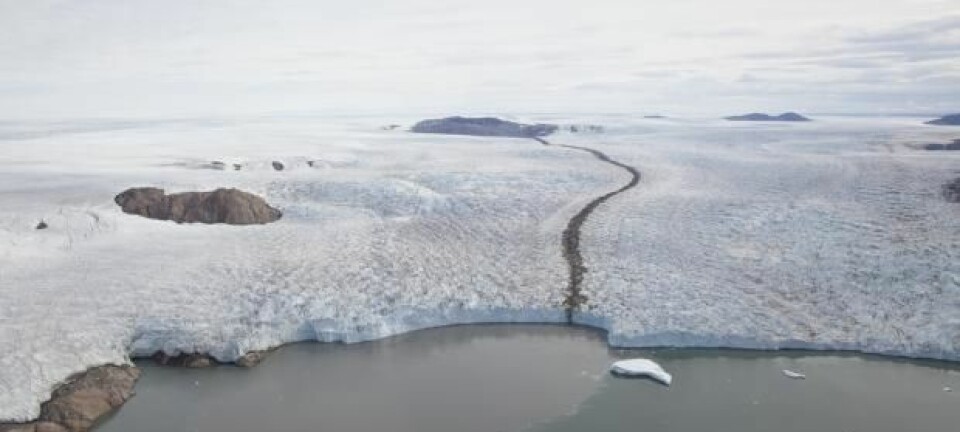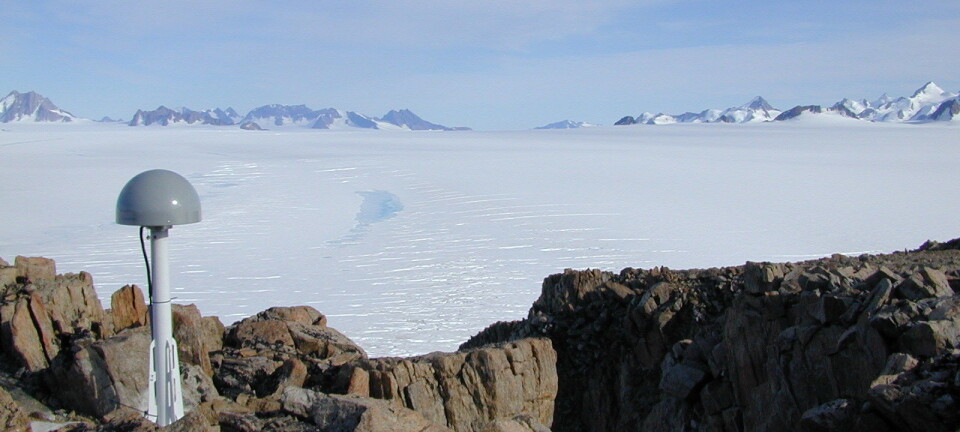
Huge eruption adds new perspective to past climate
Scientists have found matching traces of a giant prehistoric volcanic eruption in ice cores from Greenland and Antarctica. The discovery sharpens our understanding of past climate.
Danish climate researchers are currently fixing their gaze on Sumatra in Indonesia. Here lie the remains of the Toba volcano, which 74,000 years ago erupted in what was to become the largest volcanic eruption on Earth in the last two million years.
Last week, Michael Storey of Roskilde University published a study, which dated the eruption with hitherto unseen precision: the volcano erupted 73,880 years ago.
And now, scientists from Copenhagen University’s Niels Bohr Institute have used data about the eruption to link ice core drillings in Greenland and Antarctica by studying the acidity of the ice.
The eruption sent huge clouds of ash and sulphuric acid up into the atmosphere and all the way up to the stratosphere. Here, it spread across the globe on both hemispheres, and after a few years the acid fell back down to Earth in the form of acid rain.

The researchers have now traced this acid in the ice caps in Greenland and on the other side of the planet, on Antarctica. This has enabled them to ‘synchronise’ the two hemispheres with unprecedented precision.
”We know that the series of acidity peaks [from the eruption and the subsequent acid rain, ed.] from the two ice cores match, because we have counted the annual layers between acid peaks in ice cores from the two ice caps, and it fits together," says glaciologist Anders Svensson, of the Centre for Ice and Climate at the Niels Bohr Institute.
Closer to past climate
The new findings enable the scientists to compare the ice cores from Greenland and Antarctica with an annual accuracy. In this way, they can combine our knowledge of climate change in the northern and southern hemispheres.
"By measuring the content of greenhouse gases in the ice cores, scientists have previously had a relative uncertainty of a few hundred years,” he says.

“With the volcanic layers, we can link the cores firmly together within a few decades.”
The findings are published in the journal Climate of the Past.
Sheds new light on global climate change
There has been much speculation about how such a huge eruption affected the climate. The giant clouds of sulphur particles that are thrown up into the stratosphere form a blanket that shields from the sun’s radiation and this causes the Earth to cool.
But how much and for how long? Modelling has shown that such an enormous eruption could cause a cooling of up to ten degrees in the global temperature for decades.
Warming of the southern hemisphere
We know that the series of acidity peaks from the two ice cores match, because we have counted the annual layers between acid peaks in ice cores from the two ice caps, and it fits together.
The precise dating of the Toba eruption confirms that it was followed by a more than 1,000-year-long cold spell in Greenland in the northern hemisphere.
But the new findings show that the eruption did not cause prolonged global cooling, as it coincided with strong warming in Antarctica, Svensson points out.
“In the temperature curves from the ice cores we can see that there is no general global cooling as a result of the eruption. There is certainly a cooling and large fluctuations in temperature in the northern hemisphere, but it becomes warmer in the southern hemisphere, so the global cooling has been short.”
Nuanced picture of climate change
This pattern of ’opposite’ climates in the north and south, along with sudden climate changes in the north, can be seen throughout the Ice Age and is known as the ‘bipolar seesaw’.
Svensson hopes the new findings can provide a more nuanced picture of this seesaw:
”It is of course thought-provoking that Toba erupted during one of the periods where strong cooling was occurring in the north. But in relation to the many other cooling periods in Greenland’s Ice Age, there have not been many big eruptions.”
-----------------------------
Read the Danish version of this article at videnskab.dk









